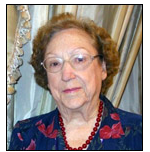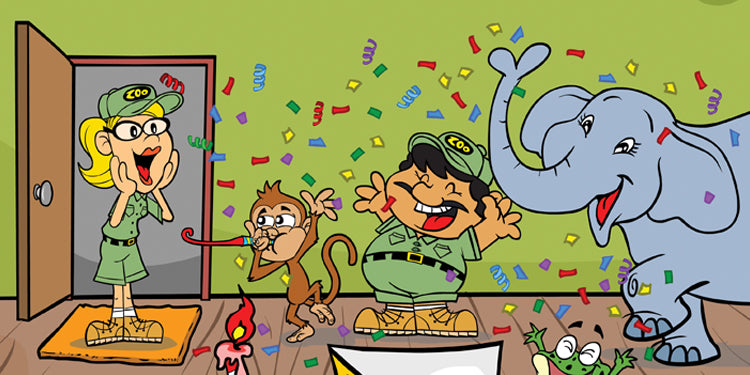
This is a guest blog post by Dr. Geraldine Haggard, who is a retired teacher, Reading Recovery teacher leader, author, and university teacher. It is the first post in a series of posts on using books for building inference skills.
In this series of blog posts, I will look at the use of guided-reading-leveled books and oral language readers in the early grades to develop problem solving and inference skills in young readers. First, let’s look at some definitions for ‘infer’:
in·fer /inˈfər/ verb
- to search for a conclusion about something from known facts or evidence
- to reach a conclusion about something from known facts
- to make an educated guess based on looking carefully at facts and coming to a possible conclusion
How can we teach our students to possess this skill that is so necessary to the rest of their education, and, indeed, their lives?

What Reading Recovery Has Taught Us
Marie Clay, in Reading Recovery: A Guidebook for Teachers in Training , stated her belief that "the child learns to read by attending to many aspects of text (letters, words, pictures, language, and messages).” The young reader responds as he learns these ways for working at problem solving. She stresses the teacher’s role in helping the child learn to search and simplify the complexity of print. Searching is one of the strategies to be modeled and prompted by the teacher as he or she works with emerging readers and writers.
In Becoming Literate , she states that the search for meaning enables the reader to notice new things about words, print, and messages. The children can then link these discoveries to other things they know. This inner control of reading helps the child construct information from the text and what he knows. Clay expressed her belief that every child is “entitled to an introduction to a text before reading.” This introduction can allow the student to connect things he knows and the text as he reads. Searching strategies can lead the young reader from what he knows to something that he hears or reads.
A Look At Common Core Standards Connected To Inferring
First we will explore kindergarten. The following standards are related to inferring at that level. As you study these, you will see the importance of listening and speaking activities.
LITERATURE:
- With prompting and support ask and answer questions about key details in a text. (CCSS.ELA-LITERACY.RL.K.1)
- With prompting and support describe the relationship between the illustrations and the text in which they appear. (CCSS.ELA-LITERACY.RL.K.7)
- With prompting and support compare and contrast the adventures and experiences of characters. (CCSS.ELA-LITERACY.RL.K.9)
INFORMATIONAL TEXT:
- With prompting and support identify the main topic and retell key details of a text. (CCSS.ELA-LITERACY.RI.K.2)
- With prompting and support describe the connection between individuals, events, ideas, or pieces of information in the text. (CCSS.ELA-LITERACY.RI.K.3)
- With prompting and support ask and answer questions about unknown words in a text. (CCSS.ELA-LITERACY.RI.K.4)
- With prompting and support identify the reasons the author gives to support points in a text. (CCSS.ELA-LITERACY.RI.K.8)
SPEAKING AND LISTENING:
- Ask and answer questions in order to seek help, get information, or clarify meaning. (CCSS.ELA-LITERACY.SL.K.3)
- Describe familiar people, places, things, or events with prompting and support. (CCSS.ELA-LITERACY.SL.K.4)
- Add drawings or other visual displays to describe and provide additional details. (CCSS.ELA-LITERACY.SL.K.5)
I have selected three books that can be used in different ways to help kindergarten children as they receive modeling, prompting, and opportunities to problem-solve by inferring. I’ll introduce the first one today and the others in part two of this series of posts. In part three, we’ll look

Book One: The Surprise
The first book I chose is
The Surprise
by Alan Trussell-Cullen, which is part of the
Zoozoo Storytellers
series of oral language books for fluency. This book can also be used in guided reading. Before reading, share the cover illustration using an Elmo. Invite the children to study the projected picture and think of questions they might ask based on the picture before they hear the story. Examples of questions might include these:
- What might the man be writing?
- Who is the lady in the picture?
- Why is there a calendar in the picture?
Invite the children to share their additional questions and write the questions on the board. Ask them to think about answers to their questions as they hear the story. Ask for sharing and prompt for replies.
- The man is inviting friends to a birthday party for the lady.
- The date on the calendar is her birthday.
- The man did not want the lady to know about the party and asked the animals to deliver the note, but to be quiet as they did the deliveries.
As the book is shared the following inferences might be made:
- On cover page the man is happy. Why?
- On page two do you think the lady understands what is happening?
- What do you do if you "pass something along"?
- On page 8, why is the lady 'up in the tree'?
- On last page, do you think she was surprised?
Discuss the role of the illustrations as they discuss the questions' answers. The page with the discussion idea can be shared as you invite responses for each question.
This is the end of part one in this series of blog posts on teaching and using leveled books for science in kindergarten. To read the next post in this series, click here . You can subscribe to our blog in the upper right sidebar to get new posts delivered to your inbox.
~~~
Geraldine Haggard is the author of several books from our Kaleidoscope Collection . She spent 37 years in the Plano, TX school system. She currently tutors, chairs a committee that gifts books to low-income students, teaches in her church, and serves as a facilitator in a program for grieving children.
~~~
To download information sheets with key features about the Kaleidoscope Collection , which the post author has written books for, and Zoozoo Storytellers , which contains the book mentioned in this post, click the images below.













































![6 Fun and Easy Activities to Practice Sequencing [Grades K-1]](http://www.hameraypublishing.com/cdn/shop/articles/Red_Typographic_Announcement_Twitter_Post-5_bf1ae163-a998-4503-aa03-555b038d1b76_600x.png?v=1689961568)
![Leveraging Prior Knowledge Before Writing and Reading Practice [Grades 1–2]](http://www.hameraypublishing.com/cdn/shop/articles/Red_Typographic_Announcement_Twitter_Post-4_600x.png?v=1689961965)




